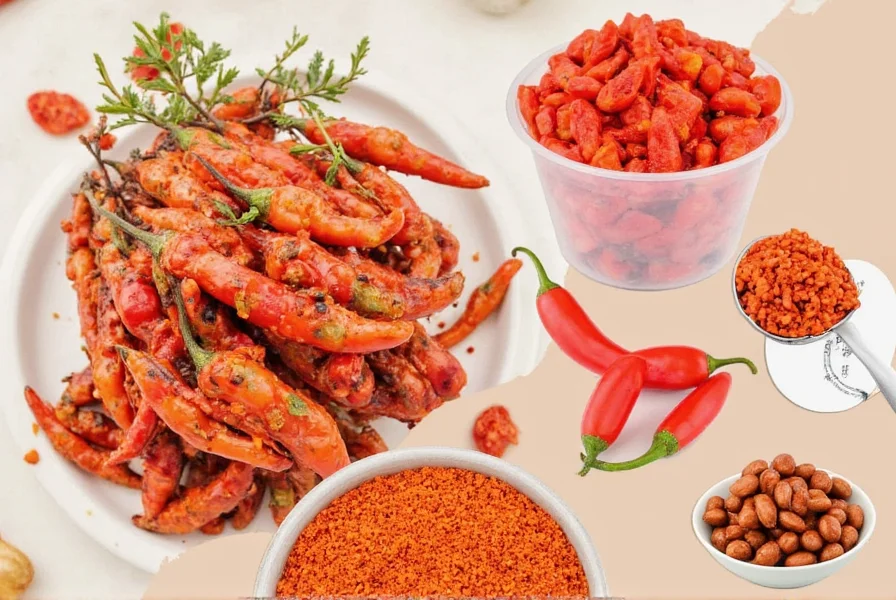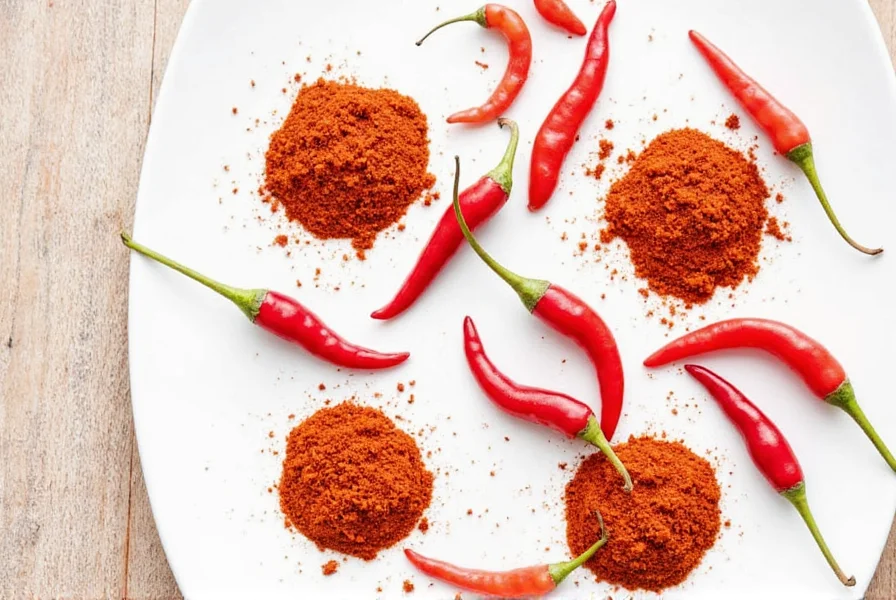Looking for Thai red chili substitutes? Don't worry — you can easily replace them with these 7 alternatives that match heat, flavor, and usage for pad thai, curries, soups, and more. Here's exactly what to use for authentic Thai dishes when you're out of red chilies.
Top 7 Thai Red Chili Substitutes
| Chili | Scoville Units | Flavor Notes | Best Use for Thai Dishes |
|---|---|---|---|
| Serrano | 10,000–23,000 | Bright, grassy | Pad thai, stir-fries, fresh salsas (use 1 serrano for every 2 Thai chilies) |
| Cayenne | 30,000–50,000 | Earthy, sharp | Curry pastes, dry rubs, soups (1 tsp powder = 1 Thai chili) |
| Fresno | 2,500–10,000 | Smoky, sweet | Milder curries, rice bowls, tom yum soup (use 2-3 fresnos for 5 Thai chilies) |
| Arbol | 15,000–65,000 | Nutty, woody | Oil infusions, slow-cooked curries (1 dried arbol = 1 Thai chili) |
| Habanero | 100,000–350,000 | Tropical, floral | Experimental heat lovers (1/8 habanero = 1 Thai chili — use extreme caution) |
| Jalapeño | 2,500–8,000 | Crisp, mild | Beginner-friendly dishes (2-3 jalapeños = 5 Thai chilies) |
| Ghost Pepper | 855,000–1M+ | Fruity, earthy | Only for heat challenges (tiny pinch = 1 Thai chili — not for cooking) |

Best Substitutes by Dish Type
- Pad Thai: Serrano peppers (fresh) or cayenne powder for authentic heat without overpowering
- Green Curry: Dried arbol chilies for deep, complex flavor or cayenne for quick heat
- Tom Yum Soup: Fresno chilies for smoky sweetness or 1/2 serrano for balanced heat
- Mild Thai Dishes: Jalapeños (remove seeds) or 2-3 fresnos for beginner-friendly spice
Buying Guide: How to Choose the Right Substitute
Choosing the perfect Thai chili substitute depends on your dish and heat tolerance. Here's how to shop smart:
1. Match Heat to Your Dish
- Low Heat (mild dishes): Jalapeño or Fresno chili
- Moderate Heat (pad thai, soups): Serrano or cayenne powder
- High Heat (curries, stir-fries): Arbol or dried cayenne
- Extreme Heat (experimental): Habanero or ghost pepper (use sparingly)
2. Match the Format
- Fresh chilies: Serrano, jalapeño, or fresno for quick-cooking dishes
- Dried chilies: Arbol or cayenne flakes for slow-cooked curries
- Powdered: Cayenne or ghost pepper powder for spice rubs
3. Where to Buy
- Fresh chilies: Most supermarkets (jalapeños, serranos), Asian markets (fresnos, arbol)
- Dried/powdered: Amazon, Penzeys Spices, or specialty spice shops
- Pre-made pastes: Shuang Hui Chili Paste (closest to Thai flavor), Lee Kum Kee Chili Garlic Sauce
Frequently Asked Questions
What is the best substitute for Thai chili in curry?
Dried arbol chilies or cayenne powder are ideal for curries due to their concentrated heat and earthy notes. For fresh options, use 1-2 serranos per Thai chili. Remember: dried chilies provide deeper flavor in slow-cooked curries, while fresh chilies work better for quick stir-fries.
Can I use jalapeños instead of Thai chilies?
Yes, but jalapeños are much milder (2,500-8,000 Scoville vs. 50,000-100,000 for Thai chilies). Use 2-3 jalapeños for every Thai chili, and remove seeds for even less heat. They work best for beginner-friendly dishes or when you want subtle spice.
How much cayenne pepper equals one Thai chili?
1 teaspoon of cayenne powder equals about 1 Thai red chili. For fresh cayenne peppers, use 1/4 to 1/2 pepper per Thai chili. Always start with less and adjust to taste — cayenne is potent and can easily overpower a dish.
What's the mildest Thai chili substitute?
Fresno chilies (2,500-10,000 Scoville) are the mildest option with authentic Thai-like flavor. Jalapeños (2,500-8,000) are also mild but more vegetal. For very mild dishes, use 2-3 fresnos or jalapeños for every 5 Thai chilies.
How to substitute Thai chili in tom yum soup?
Use 1-2 fresno chilies for smoky sweetness or 1 serrano for bright heat. If using dried chilies, soak 1 arbol in warm water for 10 minutes before adding. For instant heat, add 1/2 tsp cayenne powder to the broth.
Can I use bell peppers as a substitute for Thai chili?
No — bell peppers have zero heat. To add mild spice, mix bell peppers with a tiny pinch of cayenne powder (1/8 tsp per bell pepper). This creates a sweet-but-spicy base for stuffed peppers or mild Thai dishes.
How should I store chili substitutes properly?
- Fresh chilies: Refrigerate in crisper drawer for 1-2 weeks, or freeze whole for 6-12 months (no thawing needed)
- Dried chilies: Store in airtight containers away from light for 6-12 months
- Ground powders: Keep in sealed jars away from heat; use within 6 months for best flavor
- Chili pastes: Refrigerate after opening and use within 1 month, or freeze in ice cube trays
Conclusion
Running out of Thai red chilies doesn't mean compromising flavor. Whether you're making pad thai, curry, or tom yum soup, these 7 substitutes deliver authentic heat and flavor for every dish. Remember: start with less heat than you think you need, then adjust to taste. With this guide, you'll never be caught off-guard again — stay spicy, and enjoy perfect Thai dishes anytime!











 浙公网安备
33010002000092号
浙公网安备
33010002000092号 浙B2-20120091-4
浙B2-20120091-4